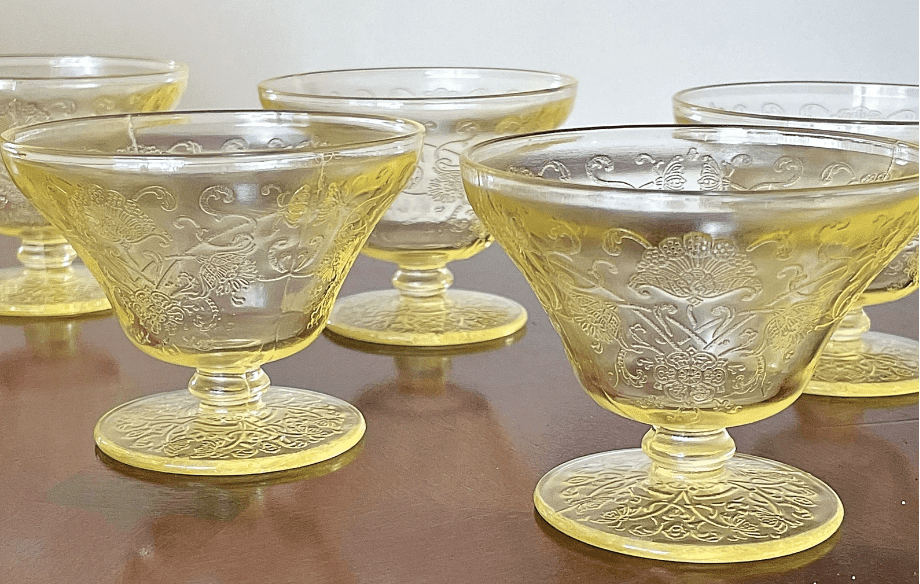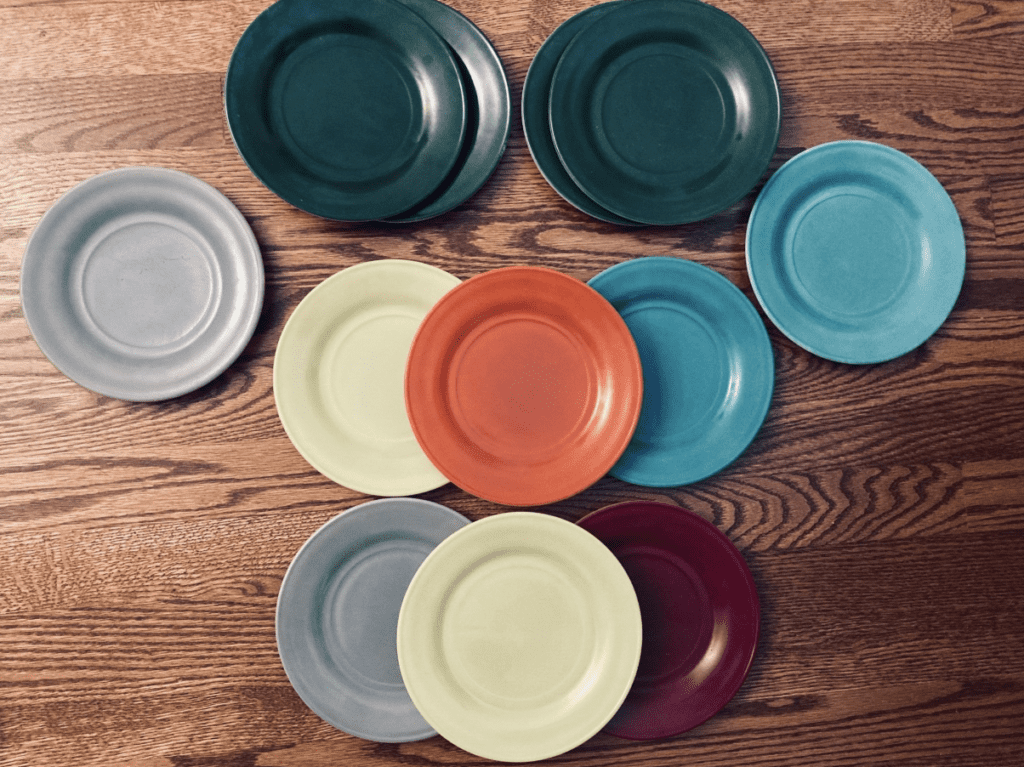Hazel-Altas Glass Company is a Depression Era glass company that is still in the homes of many of our grandparents. Many have questions about this historical company and its glass. I grew up near where the headquarters of this historical company was and know a great deal about the history and value of this glass company.
Hazel Atlas is a monumental glass company. Read on to learn about this historical company and its frequently asked questions.

When was Hazel-Atlas Milk Glass Made?
Hazel-Altas was founded in 1902 and ran under the original ownership until 1956 when it was sold to Continental Can. No changes were made to Hazel-Altas inventory until it was sold in 1964 to Brockway, who lessened the inventory. In 1987 the Hazel-Altas glassmaking machinery was destroyed.
Hazel-Atlas glass was a staple glass company during the depression era. Their glass company flourished for years while the United States of America was suffering in poverty.

Hazel-Atlas did not begin to suffer until it was sold to Continental Can who was not able to help Hazel-Atlas grow and change with the times. Continental Can was forced to sell Hazel-Atlas to Brockway who tried to save the company by making some key changes.
One of the key changes Brockway made to Hazel-Atlas was to reduce the company’s inventory to save on costs, but this was not able to save the company and Brockway ended up selling the company to Anchor Hocking.
Anchor Hocking ended up selling the company to a holding company and in 1987, the Hazel-Atlas glassmaking machinery was destroyed.
Is Hazel Atlas Glass Depression Glass?
Hazel-Atlas glass was one of the biggest producers of Depression Glass. Hazel-Atlas created Depression Glass mainly in the colors of pink, green, blue, and clear, but also offered some patterns in yellow, amber, purple (amethyst), and even black. Many of their Depression Glass was sold with other products such as oats to make them even cheaper in the Depression Era.
Hazel-Atlas Glass made a lot of depression glass because that was what was mainly sold during the times of the company’s peak. The depression glass was cheap and affordable for those who were suffering due to the stock market crash. It was also pretty and added beauty to a dark time.
What is Hazel-Atlas Depression Glass?
Hazel-Atlas created inexpensive glasses that were of a transparent colored nature, which are classified as depression glass. Many of these glassworks were given away as premiums with other products to increase sales. Hazel-Altas was one of the most popular producers of depression glass.
Hazel-Atlas depression glass is what kept the company alive. It provided jobs to those who needed work during this time of poverty, which made the company extremely valuable for the economy during the depression era. Its cost-efficient glass provided people with the glass supplies they needed.
Is Hazel-Atlas Pressed Glass?
Hazel-Altas is pressed glass because pressed glass was a cheap form of making glass back in the depression era. Pressed glass is where glass is pressed into molds with a plunger by machinery. Pressed glass was an easy way to make a lot of glass very quickly, which is why it could be sold cheaper.
During the depression era, it was very hard to afford workers since even companies were suffering due to the stalk market crash. Therefore, it was very important for companies like Hazel-Atlas to be able to get a lot of work done with only a few employees to stay afloat. Pressed Glass was a great way to keep Hazel-Atlas afloat.
Did Hazel-Atlas Make Milk Glass?
Hazle-Altas’ main glass was a form of milk glass called platonite. Milk glass is now a collectible form of glass that is known for its beautiful nature and classic look. Hazel-Atlas’ milk glass can be sold at a profit since it is considered an antique and milk glass has a great value.
Hazel-Atlas glass did make the traditional milk glass that we think of, which is the milky colored glass that is so beautiful to look at. Hazel-Atlas, though, made most of its profits through platonite which is a form of milk glass and was cheaper to make than the thick nontransparent milk glass.

Platonite actually ended up being more sturdy than milk glass and therefore made it a better product to buy when corners were tight.
What is Hazel-Atlas Platonite?
Hazel-Altas Glass Company introduced platonite glass in 1936. Platonite glass is a form of milk glass, but instead, it has a translucent, see-through quality that makes it special and beautiful to look at. Platonite glass is created through a fire-on process that makes its colors more vibrant and memorable.

Hazel-Atlas platonite glass was a very inexpensive glass that worked great for the depressive time that Hazel-Atlas operated in. The coloring was very beautiful, which added color during a time that was classified by its grey overtones of poverty and financial stress.
Platonite is also a very strong form of glass. They will last longer and is useful for families who cannot afford to replace their glassware when they shatter due to poverty.

Is Hazel-Atlas and Anchor Hocking the Same Company?
Hazel-Atlas and Anchor Hocking are not the same company, but rather two different companies that created glass during the depression era. Anchor Hocking was created in 1905 after Hazel-Atlas. Hazel-Atlas is often misidentified with Anchor Hocking glass since Hazel-Atlas glass is often marked with an AH.

Hazel-Atlas and Anchor Hocking are commonly misidentified as each other since they both make depression era glass. Also, with their matching initials, it is easy to believe that a Hazel-Atlas is an Anchor Hocking company. Anchor Hocking actually did own Hazel-Atlas for a little while back in the 1980s, but they were not able to help the company flourish and ended up having to sell the company.
When was Hazel-Atlas Moderntone Made?
Hazel-Atlas glass form moderntone was curated from 1934 to 1942. Moderntone is a translucent colored glass. Hazel-Atlas started making a translucent blue moderntone after their glassmaking deal with General Mills Food Corporation fell through, which left them with a tank of blue glass.

Hazel-Atlas made a deal with General Mills Food Corporation to make a series of Shirley Temple glassware, but unfortunately, due to the economic crisis, the deal fell through. This left Hazel-Atlas with a whole bunch of blue glass. They were resourceful and made a line of moderntone glass to save on money and it was able to bring them a good amount of profit.
For more information, check out our Hazel-Atlas identification guide and Hazel-Atlas glass safety guide.

